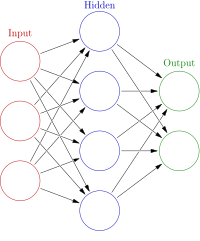
Photo from wikipedia
Deciphering the key mechanisms of morphogenesis during embryonic development is crucial to understanding the guiding principles of the body plan and promote applications in biomedical research fields. Although several computational… Click to show full abstract
Deciphering the key mechanisms of morphogenesis during embryonic development is crucial to understanding the guiding principles of the body plan and promote applications in biomedical research fields. Although several computational tissue reconstruction methods using cellular gene expression data have been proposed, those methods are insufficient with regard to arranging cells in their correct positions in tissues or organs unless spatial information is explicitly provided. Here, we report SPRESSO, a new in silico three-dimensional (3D) tissue reconstruction method using stochastic self-organizing map (stochastic-SOM) clustering, to estimate the spatial domains of cells in tissues or organs from only their gene expression profiles. With only five gene sets defined by Gene Ontology (GO), we successfully demonstrated the reconstruction of a four-domain structure of mid-gastrula mouse embryo (E7.0) with high reproducibility (success rate = 99%). Interestingly, the five GOs contain 20 genes, most of which are related to differentiation and morphogenesis, such as activin A receptor and Wnt family member genes. Further analysis indicated that Id2 is the most influential gene contributing to the reconstruction. SPRESSO may provide novel and better insights on the mechanisms of 3D structure formation of living tissues via informative genes playing a role as spatial discriminators.
Journal Title: Scientific Reports
Year Published: 2019
Link to full text (if available)
Share on Social Media: Sign Up to like & get
recommendations!